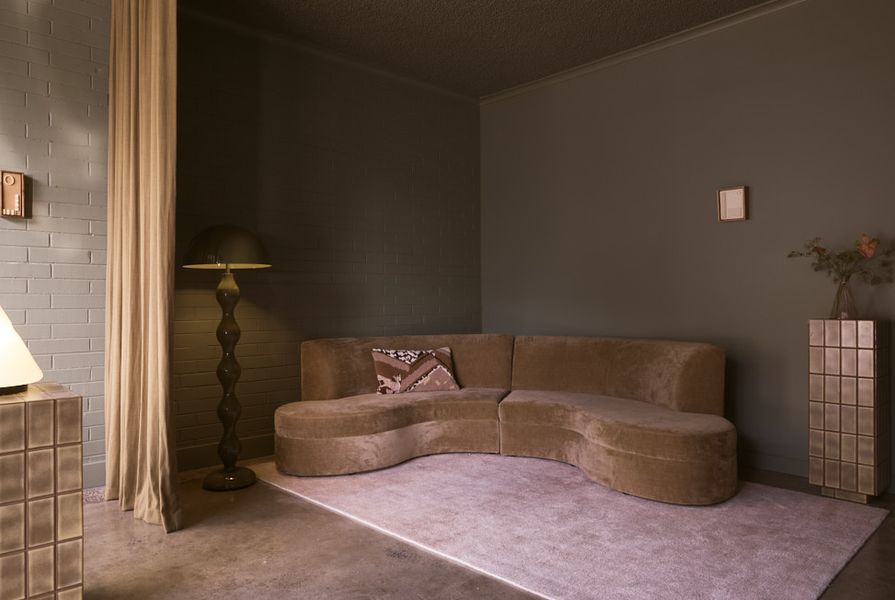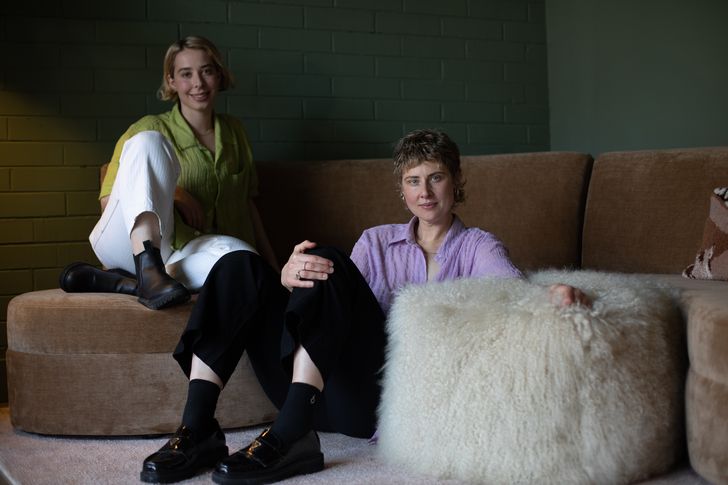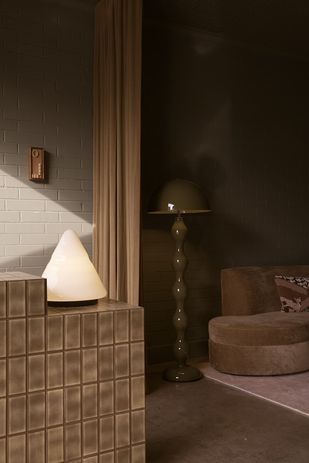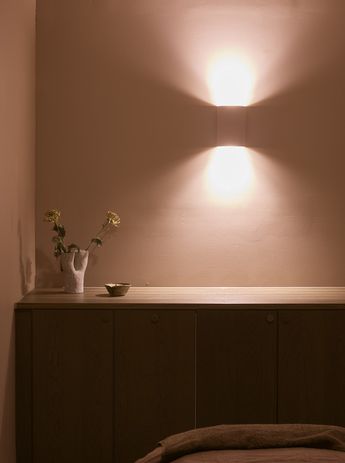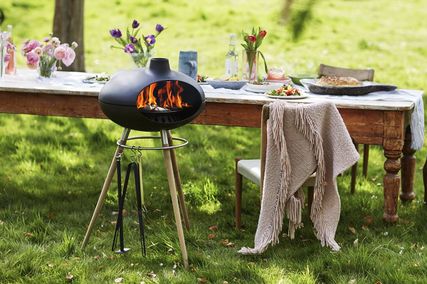Ma Saj’s founders Kate Cawley and Sonya Galenson (of Kyneton’s Good Self) started with a clear vision for their new massage parlour in Melbourne’s Carlton North. Collaborating with award-winning interior designer and stylist Ineke Hutter from Studio Co and Co, the pair sought to create a cocooning and tranquil realm. They wanted to help people relax from the moment they stepped through the door (from busy Nicholson Steet), and to avoid the purist, clinical and bright-white clichés of many wellness fitouts.
Ma Saj’s founders and partners Sonya Galenson (left) and Kate Cawley (right).
Image: Rubin Ultama
The founders’ philosophy is that “touch is a connecting vessel that has a deep impact on our psychology, and just like Ma Saj’s cloud-nine inducing massages experiences, we wanted the interiors to assist in blending physical restoration with positive mood alteration … Massages and interiors can send messages to the mind that words sometimes just can’t.” Cawley goes on to explain: “We knew that design was crucial to the client experience and that a physical space can make you feel good (or bad) instantly, and wanted to curate a space that was minimal, yet warm, and intentionally evoked a sense of calm, introspection and silence.’’
Cawley and Galenson initially engaged Hutter in a consultancy capacity, to advise them how to transform the tired shopfront into an oasis. The conversation evolved into a formal, four-month interior design and build collaboration (with builder By Model). Hutter understood the ask, explaining that “when creating spaces, it is always more about building a world that makes you feel something, rather than just what it looks like.” Formerly designing for film and television, Hutter learnt how to create a narrative-led, immersive space that could incite a certain mood or behaviour. She says: “It’s all about the vibe. We can become blind to the specifics of objects around us, but we don’t become numb to how a space makes us feel. In this case, we wanted calm and relief to wash over a person as they came through the door: a portal from the craziness of the outside world to a place of peace.”
The 1978 ‘Kilimanjaro Table Lamp’ by Sergio Asti for Raak.
Image: Rubin Ultama
The interior lulls clients into a peaceful state by engaging all the senses: soothing music, earthy scents, mood lighting, warm tones, curved edges, nostalgic furniture and buttery bedding. Taken together, these touch points help guests to melt away and bliss out. Hutter elaborates: “Upon entry, all things become squishy, rounded, quiet, flowy and tonal. There is zero discord in the palette, zero hard edges and absolutely no confusion or decisions to be made. The spatial layout is intuitive, allowing you to be greeted upon entry at reception and handed a cup of tea before floating to a welcoming curved couch, ready to hug you while you wait for your treatment – all without having to think at all.”
Colour defines the concept and the moody palette has been meticulously planned. “We are fascinated by how the concepts of light, colour, layout and space affect how people feel, learn, work and move,” says Hutter. “We also believe that you need courage to take a space to its full potential – and that often means being brave with your choice of colour.” Light varies greatly in the modest, narrow site; with the only source of natural light coming from the streetfront window at the entry, the treatment rooms at the back of the plan are cave-like. To achieve the right mood, Hutter, Cawley and Galenson tested many samples on the walls in each area to assess their impact in daylight or extremely low light. Hutter says that “the bold yet unexpected mauve and cocoa colour palette in the treatment rooms feels like a hazy, relaxed Sunday afternoon.” All tones are from Dulux, with their muted ‘Beach Fern’ applied to the exposed brick and walls in the entry and waiting room, ‘Mauve Day’ in the treatment rooms and ‘Oyster’ in the bathrooms. The original worn, terrazzo flooring adds more textural and colour interest, and nods to the site’s heritage.
Applied to the walls and sconces, Dulux’s ‘Warm Day’ creates a cosy atmosphere in the treatment rooms.
Image: Rubin Ultama
Mossy green tiles form the blocky reception desk as well as shelving for products and plinths, and complement hand-selected seventies furniture pieces, including a cream shag ottoman, sofa from Mood Objects, floor lamp from CCSS, and the 1978 ‘Kilimanjaro Table Lamp’ by Sergio Asti for Raak. Wall art by local ceramicist Cassie Hansen (Artichoke’s on-leave editor) and vases by Hilary Green add points of interest to the otherwise minimally decorated interior.
Not only does Ma Saj fully satisfy the brief and those who visit, but it is also a space that will settle deeper as the years go by, thanks to the simple, atmospheric design. It whispers rather than shouts, caresses the senses and leaves the mind and body pleasantly at ease.

